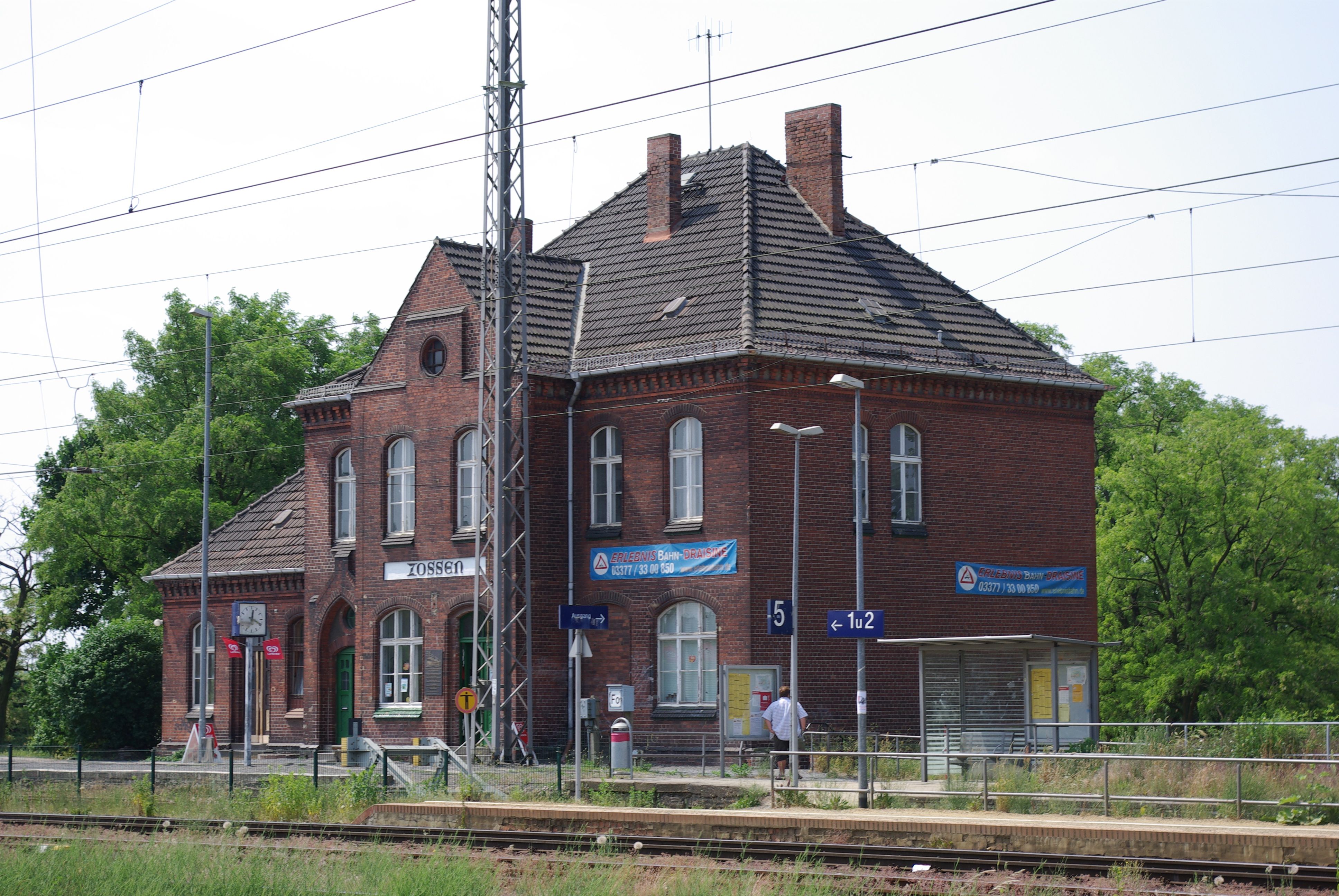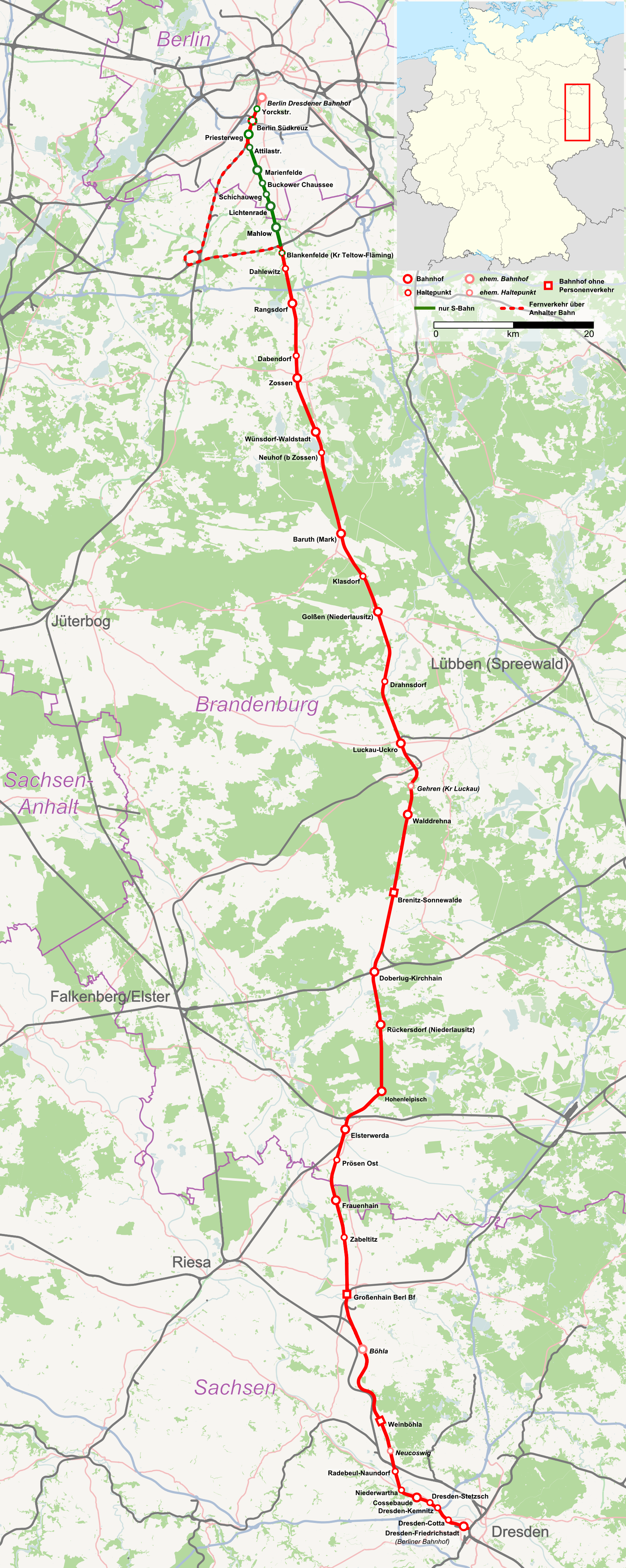|
Berlin-Marienfelde
Marienfelde () is a locality in southwest Berlin, Germany, part of the Tempelhof-Schöneberg borough. The former village, incorporated according to the Greater Berlin Act of 1920, today is a mixed industrial and residential area. Geography The Marienfelde quarter borders the Tempelhof-Schöneberg localities of Mariendorf in the northeast and Lichtenrade in the southeast. In the west, it borders on Lankwitz, part of the Steglitz-Zehlendorf borough. In the south, it is bounded by the Berlin city limits and the border with the state of Brandenburg. History The medieval '' Angerdorf'' arose together with neighbouring Mariendorf during the German '' Ostkolonisation'' migration about 1220 AD, then affiliated with the Teltow estates held by the Knights Templar commandry at Tempelhof. A fieldstone church was erected around 1240 which, still preserved, is one of the oldest in the Berlin area. The settlement of ''Merghenvelde'' itself was first mentioned in a 1344 deed, after the Bran ... [...More Info...] [...Related Items...] OR: [Wikipedia] [Google] [Baidu] |
Marienfelde Station
Berlin-Marienfelde station is a station and a freight yard in Berlin, Germany. It is located on the Berlin–Dresden railway line in the locality of Marienfelde, part of the Tempelhof-Schöneberg borough. The station is part of the Berlin S-Bahn rapid transit network. History The station, initially named ''Marienfelde'', opened with the Dresden Railway on 17 June 1875. A few months later, on 15 October 1875, it also became a stop on the parallel Royal Prussian Military Railway (''Königlich Preußischen Militär-Eisenbahn''), which ran from the Berlin Military station in Schöneberg to Zossen. Marienfelde station was far away from the built-up area of Berlin at that time. It stimulated the development of the ''Neu-Marienfelde'' mansion colony west of the tracks. From 1893 onwards, the station was rebuilt and extended with an island platform, which was opened in March 1903. The station has been served by third rail S-Bahn trains since May 1939. The former counter hall was partial ... [...More Info...] [...Related Items...] OR: [Wikipedia] [Google] [Baidu] |
Royal Prussian Military Railway
The Royal Prussian Military Railway (German: ''Königlich Preußische Militär-Eisenbahn''), also called the ''Königliche Militär-Eisenbahn'' (Royal Military Railway, KME), was a Prussian state railway, operated by the army, between Schöneberg (now part of Berlin) and Kummersdorf (now in the municipality of Am Mellensee), later extended to Jüterbog. History After the Franco-Prussian War, it was decided to build a line where railway troops could practise, as the strategic importance of the railways had increased considerably. On 9 January 1873, the Berlin-Dresden Railway Company (''Berlin-Dresdener Eisenbahn-Gesellschaft'') entered into a contract with the Prussian War Ministry, to build a line west of its tracks to be used exclusively by the Railway Battalion for military purposes. It was agreed on 26 February 1874 to build a 45.6 km long railway line from the ''Militärbahnhof (Schöneberg)'' (Military Station, Schöneberg) to the Artillerie-Schießplatz (artillery fir ... [...More Info...] [...Related Items...] OR: [Wikipedia] [Google] [Baidu] |
Berlin–Dresden Railway
The Berlin–Dresden railway is a double track, electrified main line railway in the German states of Berlin, Brandenburg and Saxony, which was originally built and operated by the ''Berlin-Dresden Railway Company'' (''Berlin-Dresdener Eisenbahn-Gesellschaft''). It runs from Berlin through the southern Teltow countryside and then between Lower Lusatia and Fläming Heath through Elsterwerda and the Großenhainer Pflege countryside to Dresden. Upgrades completed in December 2017 enabled maximum speeds of . By 2020 new signalling should allow speeds of . History Up to 1945 In 1848 the Berlin-Anhalt Railway Company opened the Jüterbog–Röderau line, connecting with the Leipzig–Dresden line and creating the first direct rail link between Berlin and Dresden. In 1872 the ''Berlin-Dresden Railway Company'' was founded to build a competing a line via Elsterwerda that was shorter. This route was opened on 17 June 1875. Long-distance traffic between Berlin and Dresden was divided b ... [...More Info...] [...Related Items...] OR: [Wikipedia] [Google] [Baidu] |
Mariendorf
Mariendorf () is a locality in the southern Tempelhof-Schöneberg borough of Berlin. Geography Mariendorf is situated between the localities of Tempelhof in the north and Marienfelde and Lichtenrade in the south. To the west it shares a border with the Lankwitz locality of Steglitz-Zehlendorf, to the east with Britz and Buckow, parts of the borough of Neukölln. History Mariendorf was mentioned for the first time in a document of 1348, when it was held by the Bailiwick of Brandenburg of the Order of Saint John (the ''Johanniterorden''). The ''Johanniter'' sold Mariendorf, together with Tempelhof and Marienfelde, to the city of Berlin and Coelln in 1435. In 1800, Mariendorf had 162 inhabitants. Beginning in 1872, a ''Villenkolonie'' ("mansion colony") was developed in the south end of Mariendorf, and by 1900 the village had 5,764 inhabitants. The ''Trabrennbahn'' (harness racing track) opened in 1913, and in 1920 Mariendorf became formally amalgamated into the greater city ... [...More Info...] [...Related Items...] OR: [Wikipedia] [Google] [Baidu] |
Boroughs And Neighborhoods Of Berlin
Berlin is both a city and one of Germany’s States of Germany, federated states (city state). Since the 2001 administrative reform, it has been made up of twelve districts (german: Bezirke, ), each with its own administrative body. However, unlike the municipalities and counties of other German states, the Berlin districts are not territorial corporations of public law () with autonomous competencies and property, but simple administrative agencies of Berlin's state and city government, the City of Berlin forming a single municipality () since the Greater Berlin Act, Greater Berlin Act of 1920. Thus they cannot be equated to US or UK boroughs in the traditional meaning of the term. Each district possesses a district representatives' assembly () directly elected by proportional representation and an administrative body called district board (). The district board, comprising since October 2021 six (until then five) members - a district mayor () as head and five (earlier four) dist ... [...More Info...] [...Related Items...] OR: [Wikipedia] [Google] [Baidu] |
Margraviate Of Brandenburg
The Margraviate of Brandenburg (german: link=no, Markgrafschaft Brandenburg) was a major principality of the Holy Roman Empire from 1157 to 1806 that played a pivotal role in the history of Germany and Central Europe. Brandenburg developed out of the Northern March founded in the territory of the Slavic peoples, Slavic Wends. It derived one of its names from this inheritance, the March of Brandenburg (). Its ruling margraves were established as prestigious prince-electors in the Golden Bull of 1356, allowing them to vote in the election of the Holy Roman Emperor. The state thus became additionally known as Electoral Brandenburg or the Electorate of Brandenburg ( or ). The House of Hohenzollern came to the throne of Brandenburg in 1415. In 1417, Frederick I, Elector of Brandenburg, Frederick I moved its capital from Brandenburg an der Havel to Berlin. By 1535, the electorate had an area of some and a population of 400,000.Preserved SmithThe Social Background of the Reformation.19 ... [...More Info...] [...Related Items...] OR: [Wikipedia] [Google] [Baidu] |
Zossen
Zossen (; hsb, Sosny) is a German town in the district of Teltow-Fläming in Brandenburg, about south of Berlin, and next to the B96 highway. Zossen consists of several smaller municipalities, which were grouped together in 2003 to form the city. Geography Since the 2003 municipal reform, Zossen consists of the following districts and municipalities: History Zossen, like most places in Brandenburg, was originally a Slavic settlement. Its name (Upper Sorbian: ''Sosny'') may derive from ''Sosna'' meaning pine, a tree quite common in the region. In 1875, Zossen railway station opened on the railway line from Berlin to Dresden and the Prussian military railway to the artillery range at Kummersdorf-Gut in present-day Am Mellensee. Between 1901 and 1904, Zossen adopted the use of different high-speed vehicles, such as electric locomotives and trams, for transportation to and from Berlin-Marienfelde. These vehicles were powered by an alternating current of 15 kV and used a variable ... [...More Info...] [...Related Items...] OR: [Wikipedia] [Google] [Baidu] |
Schichauweg Railway Station
Schichauweg station is a station on the Berlin–Dresden railway in the locality of Lichtenrade in the Berlin borough of Tempelhof-Schöneberg. It is served by Berlin S-Bahn line S2. It was the only new S-Bahn station constructed by the Berliner Verkehrsbetriebe (BVG, Berlin Transportation Company) after it took over the operations of the S-Bahn in West Berlin. It consists of two side platforms, each of which has exits to the south to the streets of Schichauweg and Barnetstraße. Additional northern entrances were opened from both platforms to the streets of Miethepfad and Kettinger Straße on 25 November 1991. History The railway line was opened at ground level through undeveloped land in 1875. There was a signalman's house southwest of the present station. The line was raised and placed on an embankment in 1938. The Berlin Outer Freight Ring (German: ''Güteraußenring'', GAR) was built at the same time; this ran east–west to the north of the present station. A connecting ... [...More Info...] [...Related Items...] OR: [Wikipedia] [Google] [Baidu] |
Buckower Chaussee Station
Buckower Chaussee station is a station on the Berlin–Dresden railway in the locality of Marienfelde in the Berlin borough of Tempelhof-Schöneberg. It is served by Berlin S-Bahn line S2. History Buckower Chaussee station was established on the Dresden railway in Berlin east of Dorfaue Marienfelde on 15 May 1946, as it was required by the American occupation forces. This station for many years was considered to be a temporary station on the then single-track S-Bahn line. It received its current appearance during the doubling of the line between Marienfelde and Lichtenrade in the late 1980s. The architect was Rainer G. Rümmler, who also designed virtually all new U-Bahn stations in West Berlin over several decades. The detailed design is similar to the stations in Berlin-Spandau and Wittenau. The two side platforms now extend to the street of Buckower Chaussee in the north. At that end a large archway spans the platforms and tracks and draws attention to the S-Bahn station. A ... [...More Info...] [...Related Items...] OR: [Wikipedia] [Google] [Baidu] |
Berlin S-Bahn
The Berlin S-Bahn () is a rapid transit railway system in and around Berlin, the capital city of Germany. It has been in operation under this name since December 1930, having been previously called the special tariff area ''Berliner Stadt-, Ring- und Vorortbahnen'' (Berlin city, orbital, and suburban railways). It complements the Berlin U-Bahn and is the link to many outer-Berlin areas, such as Berlin Brandenburg Airport. As such, the Berlin S-Bahn blends elements of a commuter rail service and a rapid transit system. In its first decades of operation, the trains were steam-drawn; even after the electrification of large parts of the network, a number of lines remained under steam. Today, the term ''S-Bahn'' is used in Berlin only for those lines and trains with third-rail electrical power transmission and the special Berlin S-Bahn loading gauge. The third unique technical feature of the Berlin S-Bahn, the , is being phased out and replaced by a communications-based train control ... [...More Info...] [...Related Items...] OR: [Wikipedia] [Google] [Baidu] |
Bombing Of Berlin In World War II
A bomb is an explosive weapon that uses the exothermic reaction of an explosive material to provide an extremely sudden and violent release of energy. Detonations inflict damage principally through ground- and atmosphere-transmitted mechanical stress, the impact and penetration of pressure-driven projectiles, pressure damage, and explosion-generated effects. Bombs have been utilized since the 11th century starting in East Asia. The term bomb is not usually applied to explosive devices used for civilian purposes such as construction or mining, although the people using the devices may sometimes refer to them as a "bomb". The military use of the term "bomb", or more specifically aerial bomb action, typically refers to airdropped, unpowered explosive weapons most commonly used by air forces and naval aviation. Other military explosive weapons not classified as "bombs" include shells, depth charges (used in water), or land mines. In unconventional warfare, other names can refer t ... [...More Info...] [...Related Items...] OR: [Wikipedia] [Google] [Baidu] |








